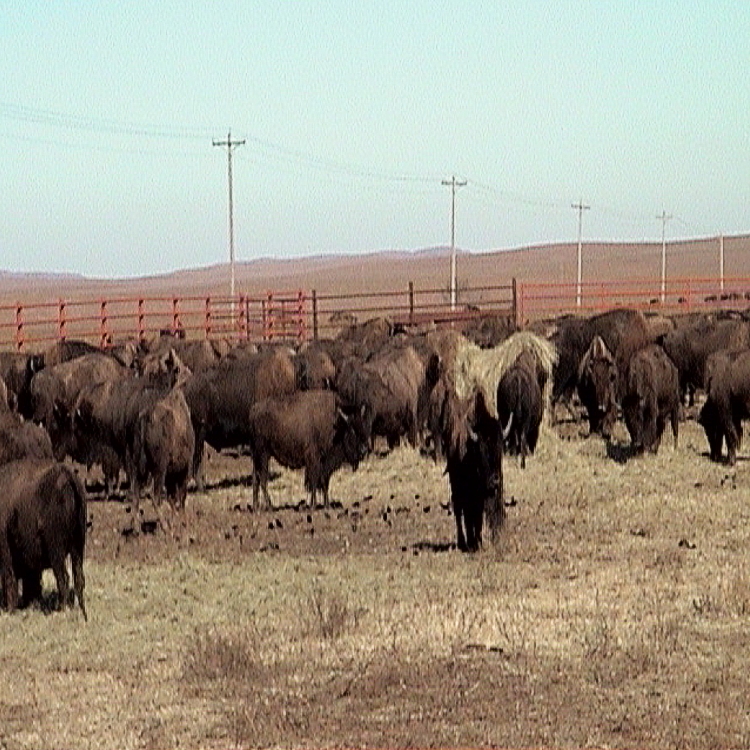|
Bison Roundup, Tallgrass Prairie
Preserve
I (Claire here), was raised in the Osage and grew
up around this beautiful country. Fall was always gorgeous, but I remember
when the Nature Conservancy took over the old Chapman Barnard Ranch and how
excited folks in the area were. Then they released the first bison on the
preserve, and we were even more excited.

|
|
The Bison are lured into a 270 confinement
|
|
Expert cowboys direct the bison one by one into the
chutes.
|
|
Slowly the 270 pen becomes a little smaller
|
A bison bull is in the squeeze chute and ready to be
examined.
|
|
He's a big bull.
|
|
Bob Hamilton & Jim Bob quickly read his transponder and
announce he's a "keeper!"
|
"I'm outta here!" and that bison is done for the year!
|
|
Fall in the Osage is beautiful.
|
|
On a personal note, this is the building in Pawhuska,
where my grandfather set up business just after statehood.
|
|
|
TNC History in the
Osage
As I (yes, it's Claire again) grew up in
this area, I have benefited from seeing the change in the management of land
through the decades. When I was a kid, prairie fires were an inevitable
evil that ranchers and farmers had to live with. We all dreaded them but
knew they would happen. And although we always enjoyed those wet and
wonderfully temperate summers, we knew they would lead to over growth of the
grass, and much more fuel than normal for the following winter's fires.
Sure enough the winter and lack of moisture would roll around and the fires
would be worse than they normally were. The Nature Conservancy came to town (and
purchased the Chapman Barnard Ranch) and immediately started prescribed burning
which all the local ranchers and farmers thought was lunacy...why would you
purposely light a fire when most of the locals worked hard just to keep fires
the furthest from their land as possible. What TNC proved, was that through prescribed burnings, not only was the fuel
that was available for the fires that did happen (outside of the prescribed
burns) more manageable, but they were also fewer and further between. IOW,
TNC would manage-burn areas during high humidity and low wind days, the grass
that grew back was green nutritious sprouts for the bison to munch on, plus when
the unexpected prairie fires did occur, there wasn't much fuel, so the fire
would burn fast and quick over the land, which meant that most critters could
crawl just a little underground and be safe while the fire scurried on down the
prairie. Additionally, the fires often just died out from lack of fuel and
were much easier to fight. This is one of the benefits of having the
land managed by TNC as opposed to the National Parks system who have a policy of
leaving the land alone. And even at that the National Parks system has
problems with that, as they have manipulated and encouraged the growth of bison
and introduced wolves into Yellowstone. Even the National Parks have to
admit that certain amount of manipulation is for the ultimate benefit of the
land. You can like the Nature Conservancy's page
here.
|
|
|
|
|
|
